Aerial photographs of Auschwitz taken by the Allied Air Forces during World War II were first exposed in 1978 by Dino Brugioni and Robert Poirer, two aerial photo-analysts who worked for the CIA. Using historical research material, they re-analyzed aerial photographs housed in the Defense Intelligence Agency Archives in Washington. Yad Vashem was able to acquire copies of some of these photographs in 1980 with Elie Wiesel’s help, and when former US President Carter visited Israel in that same year, he brought copies of the original film reels.
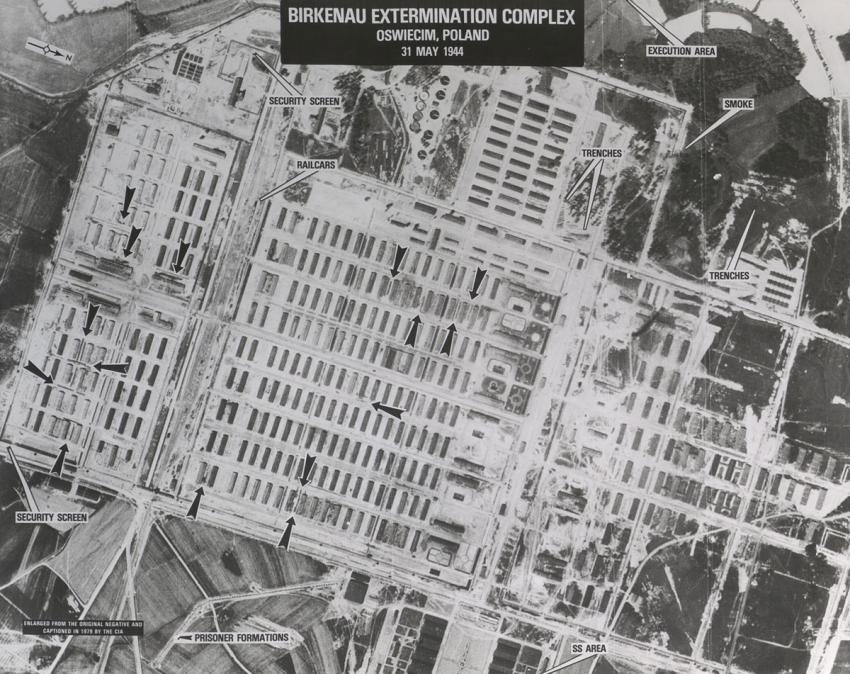
The Photo-Reconnaissance plane was actually looking for the nearby IG Farben war production factory and other war production facilities in the area. The photo material of this sortie was shared with the US 15th Air Force, which later bombed the IG Farben factory. Two CIA researchers reinterpreted the photo in 1978, and they inserted the captions and arrows on the photo. The arrows are pointing at several groups of inmates inside the camp. Also visible are several railcars next to the ramp. Smoke billowing from the chimney of Crematorium V indicates that people were exterminated in the gas chamber beneath it shortly before.
Yad Vashem Photo Archive, 964/3

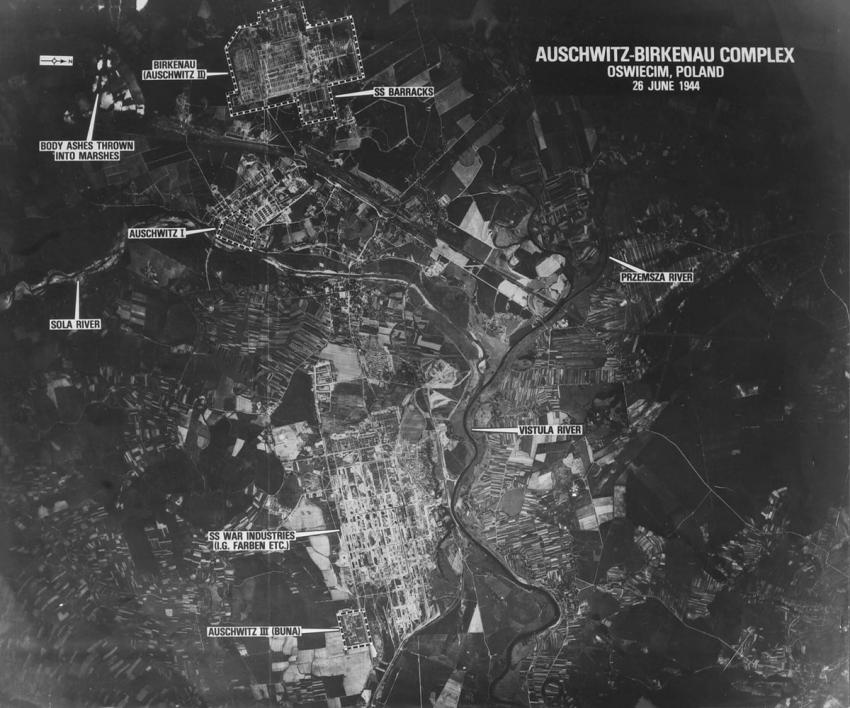
This photograph provides a comprehensive view of the 3 camps. The IG Farben factory, the industrial area next to Camp I and the town of Oswiecim are visible, as are the swamps next to Birkenau, into which the ashes of those murdered in the camp were thrown.
Yad Vashem Photo Archive, 964/7

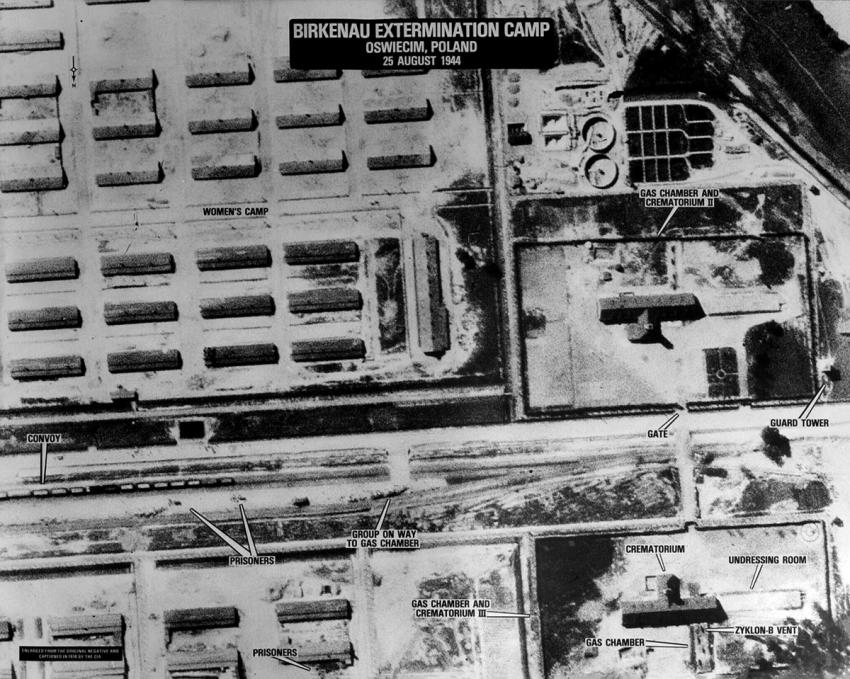
Many details from the area of gas chambers II and III, and the railway platform are visible. The roofs of the gas chambers, the crematoria above them, a train by the platform and groups of prisoners on their way to the gas chambers can be seen clearly. Note the open gate at the entrance to gas chamber II and the cultivated garden in the courtyard.
Yad Vashem Photo Archive, 964/11

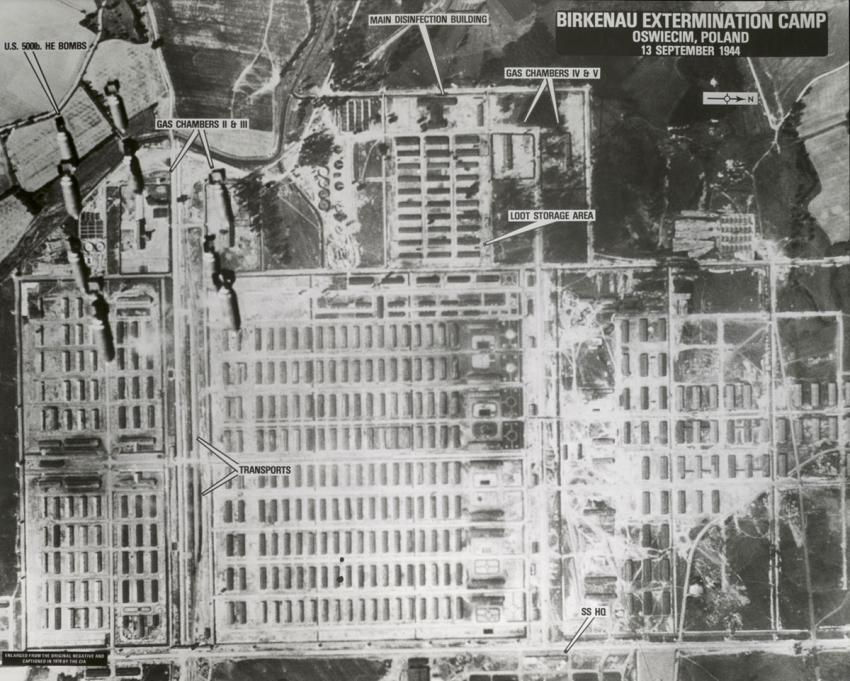
The bombs in the photograph continued on their ballistic route and hit the factory. A number of stray bombs hit Birkenau too and caused light damage. The formation of the camp is clearly visible, as is the train standing by the platform.
Yad Vashem Fotoarchiv, 964/15

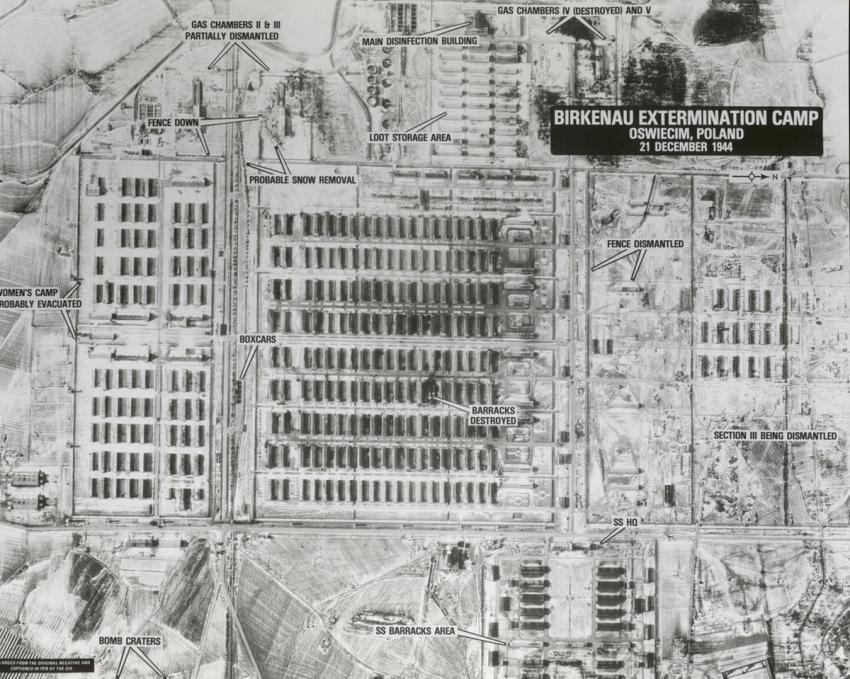
Further to an order issued by Himmler at the beginning of November to halt the gassings, the extermination installations were dismantled in November-December 1944, as can be seen in the photograph. We can see the ruins of Crematorium IV, which was destroyed in the Sonderkommando uprising of 7 October 1944, and the decorative gardens planted at the end of each block in the BII area of the camp, which remained there throughout.
Yad Vashem Photo Archive, 964/18







